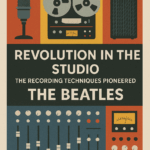

November 26, 2025
Xmas Week 3 - Click to win a FREE Gretsch! 🎅🎄🎁
Xmas Week 3 - Click to win a FREE Gretsch! 🎅🎄🎁
Xmas Week 3 - Click to win a FREE Gretsch! 🎅🎄🎁
Xmas Week 3 - Click to win a FREE Gretsch! 🎅🎄🎁
Xmas Week 3 - Click to win a FREE Gretsch! 🎅🎄🎁
Xmas Week 3 - Click to win a FREE Gretsch! 🎅🎄🎁
Xmas Week 3 - Click to win a FREE Gretsch! 🎅🎄🎁
Xmas Week 3 - Click to win a FREE Gretsch! 🎅🎄🎁
Xmas Week 3 - Click to win a FREE Gretsch! 🎅🎄🎁
Xmas Week 3 - Click to win a FREE Gretsch! 🎅🎄🎁
Xmas Week 3 - Click to win a FREE Gretsch! 🎅🎄🎁
Xmas Week 3 - Click to win a FREE Gretsch! 🎅🎄🎁
Xmas Week 3 - Click to win a FREE Gretsch! 🎅🎄🎁
Xmas Week 3 - Click to win a FREE Gretsch! 🎅🎄🎁
Xmas Week 3 - Click to win a FREE Gretsch! 🎅🎄🎁
Xmas Week 3 - Click to win a FREE Gretsch! 🎅🎄🎁
Xmas Week 3 - Click to win a FREE Gretsch! 🎅🎄🎁
Xmas Week 3 - Click to win a FREE Gretsch! 🎅🎄🎁
Xmas Week 3 - Click to win a FREE Gretsch! 🎅🎄🎁
Xmas Week 3 - Click to win a FREE Gretsch! 🎅🎄🎁


November 26, 2025
Enter exclusive app-only giveaways today!